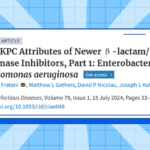
In June 2024, Blood Science published an important study led by Dr. Jie Jin and colleagues from the The First Affiliated Hospital, Zhejiang University School of Medicine, investigating the safety, pharmacokinetics, and efficacy of ivosidenib in Chinese patients with relapsed or refractory (R/R) isocitrate dehydrogenase 1 (IDH1)-mutated acute myeloid leukemia (AML). AML, a heterogeneous and aggressive hematological malignancy, presents significant treatment challenges, especially in its relapsed or refractory stages. For patients with R/R AML, survival rates are dismal, with a median overall survival of approximately five months.Introduction
Mutations in the IDH1 gene, present in a subset of AML patients, result in the production of the oncometabolite D-2-hydroxyglutarate, which drives leukemogenesis. Ivosidenib, a first-in-class oral small molecule inhibitor targeting mutant IDH1, has shown promise in treating these mutations. It received FDA approval in 2019 for adult patients with R/R IDH1-mutated AML, based on the pivotal AG120-C-001 study. The registry study, CS3010-101 (NCT04176393), aimed to evaluate the pharmacokinetic profile, safety, and clinical efficacy of ivosidenib specifically in Chinese patients, offering critical insights into this population.
Study Design and Patient Population
The study was conducted across 12 sites in China, enrolling 30 patients with R/R IDH1-mutated AML between November 2019 and April 2021. The median age of the patients was 63 years, with a significant proportion (40%) being 65 years or older. Most patients (86.7%) had de novo AML, while the remaining had secondary AML, including cases related to myelodysplastic syndromes (MDS). These patients had undergone multiple lines of previous treatments, including intensive chemotherapy and hematopoietic stem cell transplantation (HSCT).
Patients received ivosidenib at a dose of 500 mg once daily in continuous 28-day cycles. Ten patients were included in an intensive pharmacokinetic (PK) analysis to determine the drug’s absorption, distribution, metabolism, and excretion characteristics. The study’s primary objective was to assess the PK profile of ivosidenib, with secondary objectives focusing on safety and clinical efficacy.
Key Findings
The results of the study revealed that ivosidenib was well-tolerated in the Chinese population, with a safety profile consistent with global studies. The most common treatment-emergent adverse events (TEAEs) were hematologic in nature, including hypokalemia (60%), anemia (53.3%), and decreased white blood cell count (43.3%). Grade 3 or higher TEAEs were reported in 90% of patients, with the most common being neutropenia, anemia, and leukopenia. Notably, no new safety signals were identified, indicating that ivosidenib is a viable treatment option for this population.
Efficacy Outcomes
The efficacy of ivosidenib was promising, with an overall response rate (ORR) of 43.3% at the final data cutoff in November 2022. The complete response (CR) or complete response with partial hematologic recovery (CRh) rate was 36.7%, with a median time to response of 3.7 months. The median duration of response (DoR) was 14.3 months, and the median overall survival (OS) was 9.1 months. Five patients who achieved CR continued to respond to ivosidenib at the final data cutoff, with a median CR duration of 19.7 months. The estimated 12-month OS rate was 48.3%.
Significant improvements were observed in hematological parameters, including absolute neutrophil counts, platelet counts, and hemoglobin levels, with a reduction in bone marrow blast percentage, as shown in the figure below. Additionally, 50% of transfusion-dependent patients at baseline achieved transfusion independence during the study.

(Blood Science 6(3):p e00196, July 2024. | DOI: 10.1097/BS9.0000000000000196)
- A: Absolute neutrophil count (ANC) improvements over treatment cycles.
- B: Platelet count increases across treatment cycles.
- C: Hemoglobin level stability and improvement.
- D: Significant reduction in bone marrow blast percentage.
- E: Proportion of patients achieving and maintaining transfusion independence.
Significance
This registry study provides valuable insights into the use of ivosidenib in Chinese patients with R/R IDH1-mutated AML. The consistent efficacy and manageable safety profile observed in this study support the broader use of ivosidenib in this challenging patient population. As AML remains a difficult-to-treat malignancy with limited therapeutic options, particularly for older or frail patients, ivosidenib offers a promising targeted therapy that could improve survival outcomes.
Conclusion
The study led by Dr. Jie Jin and colleagues underscores the potential of ivosidenib as a single-agent therapy for Chinese patients with relapsed or refractory IDH1-mutated AML. With a favorable pharmacokinetic profile, significant clinical efficacy, and a manageable safety profile, ivosidenib represents a promising addition to the treatment landscape for AML in China. These findings are likely to influence future treatment guidelines and pave the way for further research and clinical applications of ivosidenib in this population.


